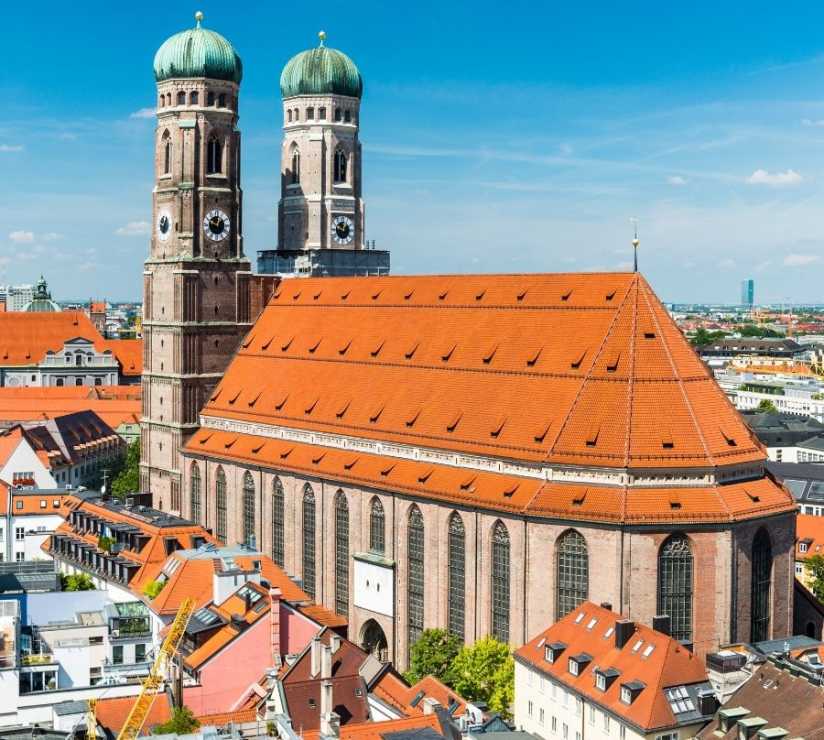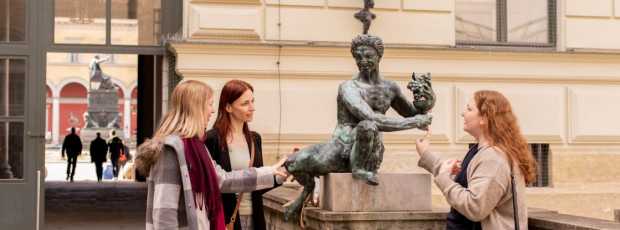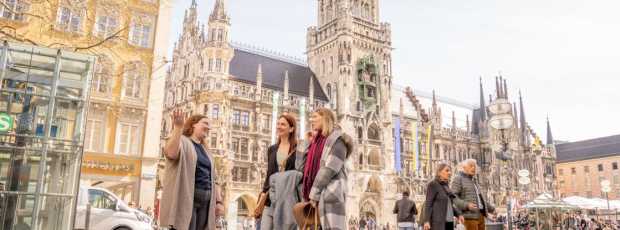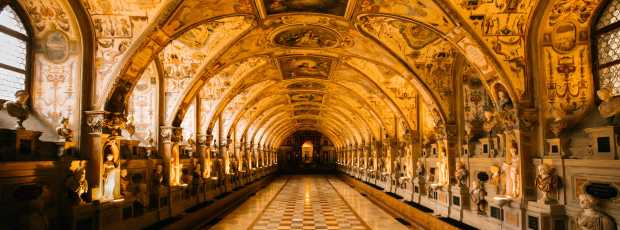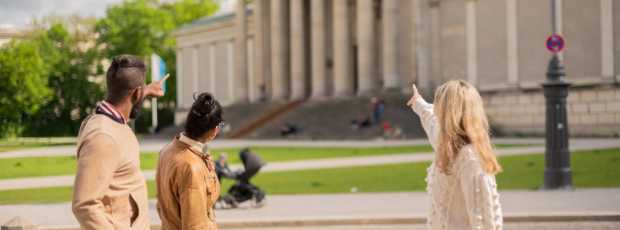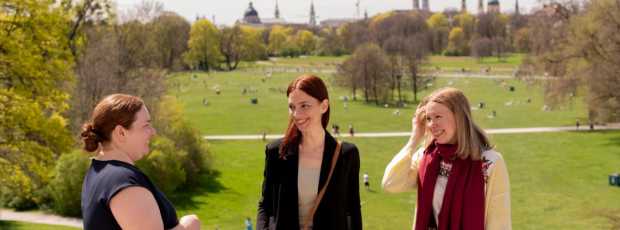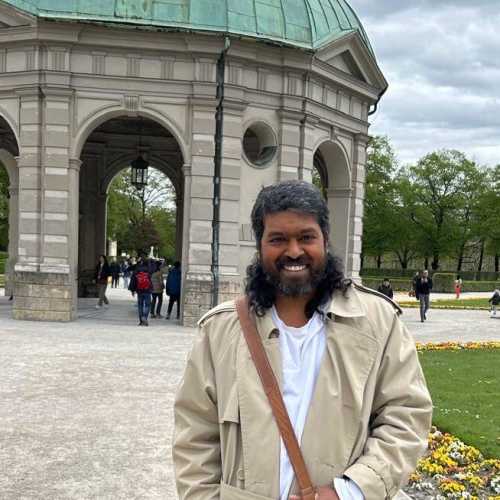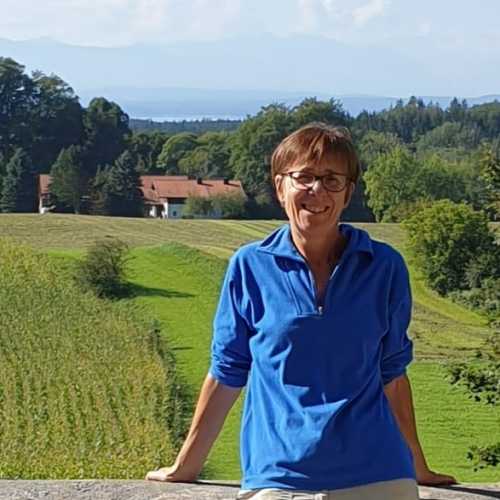Table Of Contents
- Where Munich Gets Cool: Hidden Gems, Honest Stays, and Ice-Cold Beers
- What Makes Munich Actually Cool (Spoiler: It's Not What You Think)
- The Neighborhoods Where Munich Gets Real
- Where to Stay Without Looking Like a Tourist
- The Beer Garden Reality Check
- Munich's Real Food Scene
- The Art and Culture That Locals Actually Care About
- Getting Around: The Local's Guide to Public Transport
- Day Trips That Aren't Just Neuschwanstein
- Seasonal Munich: When the City Changes Character
- Shopping: Where Locals Actually Buy Things
- Nightlife: After Dark in the Real Munich
- Sports: Beyond FC Bayern Munich
- The Business of Being Local
- Architecture: The Buildings That Tell Munich's Story
- Transportation Hubs: More Than Just Getting Around
- The Local's Guide to Seasonal Events
- Food Markets: Where Munich Eats
- Hidden Courtyards and Secret Spaces
- The University Scene: Young Munich
- Conclusion: Munich on Your Own Terms
Where Munich Gets Cool: Hidden Gems, Honest Stays, and Ice-Cold Beers
Listen, I’ve lived in Munich my entire life, and I’m tired of watching tourists get suckered into the same tired recommendations. You want to know the cool places in Munich, the ones that are truly off the beaten path? The ones that aren’t plastered all over Instagram or packed with tour groups clutching guidebooks? Good. Because I’m about to spill the beans on where locals actually hang out, where to find the best ice cold beer, and which neighborhoods will give you the real Munich experience.
What Makes Munich Actually Cool (Spoiler: It's Not What You Think)
Here’s the thing about Munich that travel blogs won’t tell you: the coolest parts of the city have nothing to do with lederhosen or oompah bands. The real Munich happens in neighborhoods where rent is still somewhat reasonable, where corner bars serve proper german beer without charging tourist prices, and where you can walk for blocks without hearing English.
The hippest part of Munich isn’t actually a single district – it’s scattered across pockets of authenticity that have somehow survived gentrification. These are the places where young Munich lives, works, and drinks, often within walking distance of each other but worlds away from the postcards. The city's unique blend of luxury amenities, cultural landmarks, and vibrant entertainment venues adds to its distinctive character and appeal.
The Neighborhoods Where Munich Gets Real
Glockenbachviertel: Where the Cool Kids Grew Up
Before Glockenbachviertel became trendy, it was just where students and artists could afford to live. Now it's where those same people stayed after they got real jobs. The area around Gärtnerplatz buzzes with an energy that feels both relaxed and electric, like a small town that happens to be in the middle of a major city.
The streets here wind in ways that make no sense if you're trying to navigate with GPS, but perfect sense once you realize they follow old creek beds. This is where you'll find bars that don't have signs, restaurants that change their menu based on what looked good at the market, and the kind of atmosphere where fewer crowds mean better conversations.
Walking through Glockenbachviertel feels like discovering Munich's best-kept secret, even though half the city's creative class lives here. The apartments might be tiny, but the neighborhood's personality is huge. You can walk from vintage shops to wine bars to record stores without ever feeling like you're checking items off a tourist list.
Maxvorstadt: More Than Just Museums
Everyone knows about the museums in Maxvorstadt, but what they don't tell you is that the area transforms completely once the tour buses leave. This is where Munich's university students and young professionals create their own scene, often in spaces that feel more like living rooms than public venues.
The streets between Theresienstraße and Türkenstraße hide some of Munich's most authentic restaurants, the kind of places where the menu isn't translated and the owner's grandmother's recipe is still the standard. These aren't hidden gems in the Instagram sense – they're just places that locals never thought to promote because they were too busy eating there.
What makes Maxvorstadt pretty cool is how it balances serious culture with everyday life. You might grab coffee next to someone discussing modern art, then walk two blocks and find yourself in a beer hall that's been serving the same munich beer for generations. It's this mixing of high and low culture that gives the area its distinctive character.
Looking for a private city experience in Munich?
Explore the city with a local who plans a private day just for you; no groups, no scripts.
Where to Stay Without Looking Like a Tourist
The Hotel Situation: Honest Talk
Let's be real about accommodation in Munich: if you're staying anywhere that advertises itself as "centrally located" with photos of Marienplatz, you're paying tourist prices for a tourist experience. The cool places to stay in munich are often the ones that don't try so hard to impress.
The Platzl Hotel gets mentioned in every guide, and yes, it's nice. But it's also exactly what you'd expect from a hotel that markets itself to visitors. If you want to stay somewhere with actual personality, look for places that cater to business travelers and locals hosting friends, not international tourism.
The best rooms in Munich often come with stories. Maybe it's a converted townhouse where each room has different furniture, or a modern place that doesn't bother with themed decor because the location speaks for itself. These hotels understand that travelers who choose Munich want substance over style.
Apartments vs Hotels: The Local's Choice
Here's what travel blogs won't tell you: many Munich locals prefer short-term apartment rentals when they travel, and the same logic applies when choosing where to stay here. An apartment in the right neighborhood gives you access to local life in ways that even the coolest hotel can't match.
The neighborhoods where locals actually live offer better value and more authentic experiences than central munich hotels. You might be a short train ride from the main attractions, but you'll also be walking distance from the places where Munich happens when tourists aren't watching.
The Beer Garden Reality Check
Beyond the Tourist Traps
Yes, Munich has incredible beer gardens. No, you probably shouldn't go to the ones everyone talks about for a true Munich experience. The English Garden's beer gardens are beautiful, but they're also where every tour guide brings their groups.
The best beer gardens in Munich are the ones where you might be the only person speaking English, where the menu assumes you know what you want, and where the ice cold beer comes in glasses that have been washed in the same dishwasher for decades. These places have character because they've never had to develop it for visitors.
What makes a beer garden authentically Munich isn't the size of the trees or the quality of the food – though both matter. It's the feeling that you've stumbled into someone's backyard party, where the rules are simple: order your beer, find a table, and settle in for the kind of conversation that only happens when people aren't in a hurry.
The Englischer Garten: More Than Just One Big Park
The Englischer Garten (English Garden) gets treated like Munich’s Central Park, but that comparison misses the point entirely. This isn’t just green space in the middle of the city – it’s where Munich goes to be itself, away from the old town crowds and tourist expectations.
The surfers on the Eisbach get all the attention, but the real magic of the Englischer Garten happens in the quieter corners where locals spread blankets, play volleyball, or just sit by the water with a book. This is where you’ll see Munich’s version of Sunday afternoon relaxation.
Walking through the englischer garten on a weekday morning reveals a completely different city than the one tourists see. Dog walkers chat by the streams, joggers follow paths that wind through actual wilderness, and the whole space feels like a small town park that happens to be massive.
Munich's Real Food Scene
Beyond Bratwurst and Pretzels
Munich's food reputation suffers from the same problem as its beer reputation: everyone focuses on the obvious. Yes, we have excellent traditional bavarian cuisine. But the city's real food scene happens in neighborhoods where chefs cook for locals who eat out regularly, not tourists sampling German food for the first time.
The restaurants that define Munich's current food scene often occupy spaces that used to be something else entirely. Former butcher shops become wine bars, old bakeries transform into modern eateries, and the best meals happen in places that look unremarkable from the street.
What makes Munich's food scene cool isn't fusion cuisine or molecular gastronomy – though you can find both. It's the confidence to serve simple, excellent food without apology or explanation. The best restaurants here trust their ingredients and their customers' taste.
Markets: Where Munich Shops
The markets in Munich reveal more about local life than any museum or guided tour. Viktualienmarkt gets the guidebook treatment, but the neighborhood markets scattered throughout the city offer better insight into how Munich actually eats.
These markets operate on schedules that make sense to locals but mystify visitors. They close when they sell out, open when the vendors feel like it, and offer seasonal produce that reflects what actually grows in bavaria rather than what tourists expect to find.
The conversations that happen at Munich's markets – between vendors and regular customers, between neighbors comparing shopping lists – capture the rhythm of daily life that most visitors never encounter. This is where Munich feels most like a small town that happens to have a million residents.
What if your day in Munich was planned by someone who knows it — and you?
City Unscripted matches you with a local host who creates a private experience based on your interests, not a set route.
The Art and Culture That Locals Actually Care About
Beyond the Obvious Museums
Munich's cultural reputation rests heavily on institutions like the Deutsches Museum and the munich residenz, and both deserve their reputations. But the cultural life that makes Munich interesting to people who live here happens in smaller venues, temporary spaces, and places that don't advertise themselves as cultural destinations.
The modern art scene in Munich thrives in spaces that change locations, names, and focus depending on who's organizing events and what spaces are available. This isn't institutional culture – it's the kind of creative energy that emerges when people make art because they have something to say, not because they have funding.
Live performances in Munich happen everywhere from converted warehouses to the back rooms of bars to actual concert halls. The bavarian state opera represents one extreme of Munich's cultural spectrum, but the opposite extreme – basement shows and pop-up performances – reveals just as much about the city's creative spirit.
The Creative Districts You Haven't Heard Of
Munich's creative energy doesn't concentrate in a single arts district like in other cities. Instead, it pops up wherever rent is reasonable and space is available, creating pockets of artistic activity that come and go based on economics rather than planning.
The areas around former industrial sites often become temporary creative zones, where artists, musicians, and small businesses create something interesting before development changes the neighborhood completely. These spaces capture Munich's ability to reinvent itself without losing its essential character.
Getting Around: The Local's Guide to Public Transport
S-Bahn Secrets
The S-Bahn system in Munich works better than most locals will admit, but using it like a tourist versus using it like a resident are completely different experiences. Locals know which cars are least crowded, which stations connect most efficiently, and how to time transfers to avoid the crowds.
The main train station gets all the attention, but Munich's train network includes smaller stations that serve as neighborhood hubs, each with their own character and surrounding businesses. These stations often provide better access to the places where Munich gets interesting.
Public transit in Munich becomes most useful when you stop thinking of it as a way to get from tourist attraction to tourist attraction and start using it the way locals do: as a way to access different neighborhoods, each with their own personality and attractions.
Walking Munich Like a Local
Munich reveals itself best to people who walk, but walking like a tourist – from major sight to major sight – misses most of what makes the city interesting. Local walking happens along routes that connect daily destinations: home to work, market to café, bar to bar.
The best walks in Munich happen accidentally, when you're trying to get somewhere else and discover a street, square, or building that makes you stop and reconsider what you thought you knew about the city. These moments can't be planned, but they happen more often when you're not following a predetermined route.
Walking distance in Munich means something different than it does in other cities. The scale feels manageable, like a collection of connected villages rather than one massive urban area. This makes exploration feel natural rather than exhausting.
Day Trips That Aren't Just Neuschwanstein
Beyond the Fairy Tale Castle
Every guide to Munich mentions the same day trip destinations, usually starting with Neuschwanstein Castle. But Munich's location provides access to dozens of interesting places that locals visit regularly, many of which offer more authentic experiences than the heavily touristed castle route.
The small towns within an hour of Munich by train reveal different aspects of bavarian history and culture than what you'll find in the city itself. These aren't museum pieces – they're functioning communities where traditional ways of life adapt to modern circumstances.
A proper day trip from Munich should leave you with stories that don't sound like they came from a guidebook. Whether that means stumbling into a local festival, discovering a family-run brewery, or just spending an afternoon in a place where tourism hasn't changed the basic rhythm of daily life.
Tip
We match you with the right host, not just any guide.Want to experience the real Munich with someone who lives there?
A fully private experience, planned and led by a local host who tailors the day to you
Seasonal Munich: When the City Changes Character
Spring and Summer: Beer Garden Season
Munich in warm weather transforms into a different city entirely. The beer gardens that seemed quaint and traditional in guidebook photos become the center of social life, where business deals get made, friendships develop, and the boundaries between work and leisure disappear entirely.
The city's relationship with outdoor life during the warmer months reveals something essential about Munich character: the ability to take leisure seriously. This isn't vacation behavior – it's how locals structure their lives around the assumption that good weather should be celebrated, not wasted.
Summer evenings in Munich stretch impossibly long, with daylight lasting past 9 PM and beer gardens staying busy until well after dark. This is when the city feels most alive, when the formality of German culture relaxes into something that feels almost Mediterranean.
Winter and Christmas: The Real Holiday Magic
Everyone knows about Munich's christmas markets, but experiencing them as a local rather than a tourist requires different expectations and strategies. The markets that locals prefer tend to be smaller, less photographed, and more focused on actual shopping than souvenir hunting.
Winter in Munich reveals the city's more introspective character. The beer gardens close, social life moves indoors, and the pace of the city slows in ways that allow for different kinds of discovery. This is when Munich's café culture becomes most important, when small venues create the warmth that larger spaces can't provide.
The period between Christmas and New Year's shows Munich at its most local. Tourists have mostly left, locals are on holiday from work, and the city takes on the relaxed atmosphere of a small town where everyone has time for longer conversations and more leisurely meals.
Shopping: Where Locals Actually Buy Things
Beyond Pedestrian Zones
Munich's main shopping areas serve their purpose, but they also feel like shopping areas in any major German city. The places where locals actually shop – for clothes, books, home goods, and everything else – reveal more personality and often better value.
The best shopping in Munich happens in stores that serve the people who live here year-round, not visitors looking for souvenirs or luxury goods. These places understand their customers' needs, tastes, and budgets in ways that tourist-focused retail never can.
Munich's retail landscape includes everything from traditional craft shops that have operated for generations to contemporary boutiques that reflect current local taste. The common thread is a focus on quality and utility rather than novelty or status.
Nightlife: After Dark in the Real Munich
Beyond Oktoberfest Stereotypes
Munich's nightlife reputation suffers from the same problem as its daytime reputation: everyone focuses on the most obvious, tourist-friendly options. The city's real after-dark scene happens in places that don't advertise themselves to visitors and don't try to recreate stereotypical German experiences.
The bars that define Munich nightlife for locals often occupy spaces that used to be something else: former restaurants, converted apartments, or ground floors of buildings that were never designed for commercial use. This creates intimate environments where conversation matters more than volume.
Munich's nightlife operates on schedules that make sense to people who work regular jobs and want to have fun without destroying their next day. This means earlier starts, better food, and a general assumption that night out should enhance your life rather than require recovery from it.
The Fitness Studio Culture
One aspect of Munich life that visitors rarely encounter is the city's serious fitness culture. Not gym culture in the Instagram sense, but the kind of fitness studio environment where locals maintain their health and social connections simultaneously.
The fitness studios scattered throughout Munich's neighborhoods serve as community centers where people maintain routines that keep them grounded in city life. These aren't places to see and be seen – they're where locals take care of themselves while staying connected to their neighbors.
Ready to plan your perfect day in Munich?
Start your experienceSports: Beyond FC Bayern Munich
The Local Team Spirit
Yes, FC Bayern Munich dominates the city's sports conversation, and yes, visiting the Allianz Arena can be an incredible experience. But Munich's sports culture extends far beyond professional football into amateur leagues, community teams, and neighborhood competitions that reveal different aspects of local character.
The sports clubs throughout Munich serve as social networks that connect people across age, profession, and neighborhood boundaries. These organizations maintain traditions, create friendships, and provide structure for community life in ways that purely commercial entertainment never could.
Munich's relationship with outdoor sports reflects the city's access to both urban amenities and natural landscapes. Within the city limits, you can cycle, run, swim, and play almost any sport, often in settings that feel more like countryside than urban recreation areas.
The Business of Being Local
Where Munich Works
Munich's economy combines traditional industries with contemporary innovation in ways that create interesting contrasts throughout the city. The areas where locals work – from BMW Welt to small design studios – influence the character of surrounding neighborhoods and the rhythm of daily life.
The business districts in Munich don't segregate work from life the way they do in other cities. Commercial areas include residential buildings, restaurants serve both tourists and office workers, and the boundaries between work and leisure blur in ways that make the city feel more integrated.
Munich's combination of international business and local culture creates opportunities for authentic experiences that most business travelers never discover. The same areas that house corporate offices also include family restaurants, neighborhood bars, and cultural venues that operate independently of the business calendar.
Architecture: The Buildings That Tell Munich's Story
Beyond the Postcard Views
Munich's architectural reputation focuses on a few iconic buildings and the restored old town, but the city's real architectural character emerges from the residential buildings, commercial structures, and public spaces where locals spend their daily lives.
The neighborhoods where locals live showcase architectural styles that reflect different periods of the city's growth and development. These aren't museum pieces – they're functioning buildings that adapt to contemporary needs while maintaining historical character.
Munich's approach to urban development balances preservation with innovation in ways that create visual interest without sacrificing functionality. New buildings incorporate traditional elements, old structures accommodate modern uses, and the overall effect feels evolved rather than planned.
Transportation Hubs: More Than Just Getting Around
The Main Train Station and Beyond
Munich's main train station serves as more than just a transportation hub – it's a social space where different aspects of the city converge. But the smaller train stations throughout Munich often provide better insight into neighborhood character and local daily life.
The areas around train stations in Munich become neighborhood centers where services, restaurants, and shops cluster to serve both travelers and residents. These areas often provide the most authentic glimpse into how locals actually live and work.
Public transport connections in Munich enable a lifestyle that many visitors don't expect: the ability to live in quiet residential areas while maintaining easy access to work, entertainment, and cultural opportunities throughout the city and beyond.
The Local's Guide to Seasonal Events
Beyond Tourist Festivals
Munich's event calendar includes dozens of festivals, markets, and celebrations that locals attend regularly but that rarely appear in tourist guides. These events reflect community interests, seasonal traditions, and cultural preferences that have developed independently of marketing considerations.
The events that matter most to Munich locals often happen in spaces that transform temporarily: parking lots become markets, parks host concerts, and streets close for celebrations that bring neighbors together. These gatherings reveal social networks and community priorities that permanent attractions can't show.
Munich's cultural calendar reflects the city's balance between tradition and contemporary life. Some events have been happening for centuries, others started last year, but all of them serve the same function: creating opportunities for people to connect with their community and celebrate shared interests.
Food Markets: Where Munich Eats
The Daily Rhythm of Local Shopping
Munich's food markets operate on schedules and with customs that reflect local eating habits, shopping preferences, and social patterns. Understanding these markets provides insight into how locals structure their daily lives around food, community, and quality.
The conversations that happen at Munich's food markets – between vendors and regular customers, between neighbors comparing ingredients – capture relationships that have developed over years of daily interaction. These aren't tourist experiences; they're community rituals.
The seasonal rhythm of Munich's markets reflects the agricultural calendar of bavaria and the surrounding regions. What's available changes throughout the year based on what's actually growing, not what tourists expect to find.
Hidden Courtyards and Secret Spaces
The Munich You Can't See from the Street
Munich's most interesting spaces often exist behind doors, through archways, or in courtyards that aren't visible from main streets. These hidden areas house restaurants, bars, shops, and services that serve locals who know where to find them.
The architecture of Munich creates these secret spaces naturally: buildings surround courtyards, passages connect streets, and what looks like solid blocks from the outside often contain gardens, patios, and small squares that feel completely separate from urban life.
Discovering these hidden spaces requires the kind of exploration that can't be planned or scheduled. They reveal themselves to people who walk without specific destinations, who follow interesting architecture, and who are curious about what exists beyond obvious sightlines.
The University Scene: Young Munich
Where Students Actually Hang Out
Munich's university areas extend far beyond campus boundaries, creating neighborhoods where student life mixes with local culture in ways that benefit both communities. These are the areas where Munich feels youngest, most experimental, and least concerned with tradition.
The bars, restaurants, and cultural venues that serve Munich's student population often provide the most affordable and authentic experiences in the city. These places understand their customers' budgets and interests in ways that tourist-focused businesses never need to consider.
Munich's student areas reveal how the city adapts to different populations and needs. The same neighborhoods that serve university students also house young professionals, artists, and anyone else who values substance over style and community over status.
Conclusion: Munich on Your Own Terms
After living here for thirty-some years, I’ve learned that Munich reveals itself best to people who approach it without fixed expectations. The city has multiple personalities – traditional and contemporary, serious and playful, local and international – and the most interesting experiences happen when these different aspects intersect. It’s easy to see why so many locals love Munich: from vibrant beer gardens to unique festivals and quiet corners, there’s a special experience for everyone.
The cool places in Munich aren’t necessarily the ones that look coolest in photos or sound most impressive in stories. They’re the places that make sense once you understand how locals actually live, work, and spend their free time. These places earn their reputation through daily use rather than marketing campaigns. If you take the time to explore Munich beyond the obvious tourist spots, you’ll uncover hidden gems and authentic moments that truly showcase the city’s charm.
Munich works best when you stop trying to conquer it like a tourist destination and start exploring it like a place where people live. The city rewards curiosity, patience, and the willingness to let experiences develop naturally rather than forcing them to match preconceived ideas. Some of the best viewpoints, like the top of the Rathaus or rooftop terraces, offer breathtaking panoramas of the whole city, letting you take in Munich’s beauty all at once.
Whether you’re staying for a weekend or considering a longer visit, Munich offers the rare combination of urban sophistication and human scale that makes cities worth exploring. The places I’ve mentioned here represent just the beginning of what you might discover when you start looking beyond the obvious. There’s quite a list of attractions, activities, and experiences in Munich, ensuring that every type of visitor finds something memorable.
The best part about Munich is that it doesn’t need you to love it – the city works perfectly well for the people who already live here. But if you approach it with genuine interest and realistic expectations, Munich might just surprise you with how much it has to offer beyond its reputation.
And that, more than any specific recommendation, is what makes Munich genuinely cool: it’s a city that’s confident enough to be itself, whether visitors understand it or not.
Romantic Munich: Date Spots Only Locals Know
Munich might be famous for its beer halls and football, but locals know it’s also a city made for romance, muif you know where to look. Forget the tourist-packed squares and head for the Englischer Garten at golden hour. This sprawling park isn’t just for joggers and sunbathers; it’s the perfect spot for a sunset stroll or a spontaneous picnic by the river, where the city’s skyline glows and the world feels far away. Bring a blanket, a couple of pretzels, and a bottle of crisp German beer, and you’ll see why locals love Munich’s green heart.
If you’re after something a little more intimate, duck into one of the city’s cozy beer gardens tucked away from the crowds. These hidden gems offer a relaxed atmosphere where you can linger over a stein, share stories, and watch the world go by. For a classic Munich date, nothing beats the charm of a traditional beer hall, think candlelit tables, live Bavarian music, and the kind of hearty food that’s best enjoyed together. Order a Weissbier and toast to the city’s old-world romance.
For couples who prefer a modern twist, the Museum Brandhorst is a favorite among locals in the know. Its bold architecture and world-class collection of modern art set the stage for a date that’s as stylish as it is inspiring. Afterward, slip into one of the nearby restaurants for a dinner that’s as memorable as the art, Munich’s culinary scene is full of surprises, from Michelin-starred elegance to neighborhood bistros with candlelit corners. Whether you’re wandering the gardens, sipping beer under chestnut trees, or sharing a meal in a hidden restaurant, Munich proves that romance is alive and well—if you know where to look.
Munich on a Budget: Cool Without the Cost
Think Munich is only for big spenders? Locals know better. Visiting Munich on a budget is not just possible, it’s actually pretty cool. Start your day with a stroll through the city’s vibrant neighborhoods, where you’ll find street art, quirky shops, and plenty of free sights within easy walking distance. The Deutsches Museum, a local favorite, offers free admission on Sundays, perfect for exploring everything from vintage aircraft to the history of German beer without spending a euro.
For lunch, skip the tourist traps and head to Viktualienmarkt or one of the city’s smaller markets. Here, you can grab fresh produce, sample street food, and soak up the atmosphere like a true Münchner. A bratwurst or a giant pretzel makes for a budget-friendly meal, and you’ll have money left over for a cold beer at a nearby stand.
When it comes to attractions, Olympiapark is a local go-to for free fun. Whether you’re catching an open-air concert, joining a pick-up football game, or just enjoying the city views from the park’s rolling hills, there’s always something happening. If you want a bird’s-eye view of Munich, the Olympiaturm offers panoramic city views for just a few euros, a small price for a big memory.
Need a place to crash that won’t eat up your travel fund? Motel One Munich-Sendlinger Tor is a smart choice. It’s centrally located, with clean, comfortable rooms and a vibe that’s more boutique than budget. Plus, you’re just a short walk from the city centre, Marienplatz, and some of Munich’s best beer halls. With so much to see, eat, and do, often for free or just a few coins, visiting Munich on a budget means you get the best of the city, minus the financial hangover.
What if your day in Munich was planned by someone who knows it — and you?
City Unscripted matches you with a local host who creates a private experience based on your interests, not a set route.
Want to experience the real Munich with someone who lives there?
A fully private experience, planned and led by a local host who tailors the day to you
